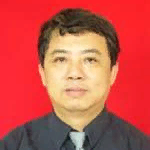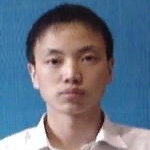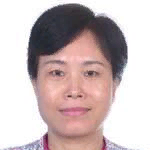International Journal of Image, Graphics and Signal Processing (IJIGSP)
IJIGSP Vol. 1, No. 1, 8 Oct. 2009
Cover page and Table of Contents: PDF (size: 256KB)
Optimal Control for Industrial Sucrose Crystallization with Action Dependent Heuristic Dynamic Programming
Full Text (PDF, 256KB), PP.33-40
Views: 0 Downloads: 0
Author(s)
Index Terms
Sucrose Crystallization, Sugar Boiling, Neural Networks, Approximate Dynamic Programming, Action Dependent Heuristic Dynamic Programming
Abstract
This paper applies a neural-network-based approximate dynamic programming (ADP) method, namely, the action dependent heuristic dynamic programming (ADHDP), to an industrial sucrose crystallization optimal control problem. The industrial sucrose crystallization is a nonlinear and slow time-varying process. It is quite difficult to establish a precise mechanism model of the crystallization, because of complex internal mechanism and interacting variables. We developed a neural network model of the crystallization based on the data from the actual sugar boiling process of sugar refinery. The ADHDP is a learningand approximation-based approach which can solve the optimization control problem of nonlinear system. The paper covers the basic principle of this learning scheme and the design of neural network controller based on the approach. The result of simulation shows the controller based on action dependent heuristic dynamic programming approach can optimize industrial sucrose crystallization.
Cite This Paper
Xiaofeng Lin,Heng Zhang,Li Wei,Huixia Liu, "Optimal Control for Industrial Sucrose Crystallization with Action Dependent Heuristic Dynamic Programming", IJIGSP, vol.1, no.1, pp.33-40, 2009. DOI: 10.5815/ijigsp.2009.01.05
Reference
[1]R. E. Bellman, Dynamic Programming. Princeton, NJ: Princeton Univ. Press, 1957
[2]P. J. Werbos, “Advanced forecasting methods for global crisis warning and models of intelligence,” Gen. Syst. Yearbk., vol. 22, pp. 25–38, 1977
[3]P. J. Werbos, “A menu of designs for reinforcement learning over time,” in Neural Networks for Control, W. T. Miller, R. S. Sutton, and P. J. Werbos, Eds. Cambridge, MA: MIT Press, 1990, pp. 67–95.
[4]P. J. Werbos, “Approximate dynamic programming for real-time control and neural modeling,” in Handbook of Intelligent Control: Neural, Fuzzy and Adaptive Approaches, D. A. White and D. A. Sofge, Eds. New York: Van Nostrand, 1992, ch. 13.
[5]D. V. Prokhorov and D. C. Wunsch, “Adaptive critic designs,” IEEE Trans. Neural Networks, vol. 8, no. 5, pp. 997–1007, Sept. 1997.
[6]J. Seiffertt, S. Sanyal, and D. C. Wunsch, “Hamilton–Jacobi–Bellman equations and approximate dynamic programming on time scales,” IEEE Trans. Syst., Man, Cybern. B, vol. 38, no. 4, pp. 918–923, 2008.
[7]Q. Wei, H. Zhang, and J. Dai, “Model-free multiobjective approximate dynamic programming for discrete-time nonlinear systems with general performance index functions,” Neurocomputing, vol. 72, no. 7–9, pp. 1839–1848, 2009.
[8]H. Zhang, Q. Wei, and Y. Luo, “A novel infinite-time optimal tracking control scheme for a class of discrete-time nonlinear system based on greedy HDP iteration algorithm,” IEEE Trans. Syst., Man, Cybern. B, vol. 38, no. 4, pp. 937–942, Aug. 2008.
[9]Y. Zhao, S. D. Patek, and P. A. Beling, “Decentralized Bayesian search using approximate dynamic programming methods,” IEEE Trans. Syst., Man., Cybern. B, vol. 38, no. 4, pp. 970–975, Aug. 2008.
[10]J. Si and Y. T. Wang, “On-line learning control by association and reinforcement,” IEEE Trans. Neural Networks, vol. 12, no. 2, pp. 264–276, Mar. 2001.
[11]D. Liu, X. Xiong, and Y. Zhang, “Action-dependent adaptive critic designs,” in Proc. Int. Joint Conf. Neural Networks, Washington, D.C., July 2001, vol. 2, pp. 990–995.
[12]D. Liu, Y. Zhang, and H. Zhang, “A self-learning call admission control scheme for CDMA cellular networks,” IEEE Trans. Neural Networks, vol. 16, no. 5, pp. 1219–1228, Sept. 2005.
[13]F. Wang, H. Zhang, and D. Liu, “Adaptive Dynamic Programming: An Introduction,” IEEE Computational Intelligence Magazine, May 2009.
[14]Chen Weijun, Xu Sixin, et al., Principle and Technology of Cane Sugar Manufacture, vol. 4. Beijing, China: China Light Industry Press, 2001.
[15]Han Liqun, Artificial Neural Network Theory, Design and Application. Beijing, China: Chemical Industry Press, 2007.



